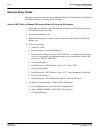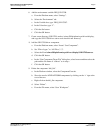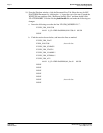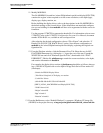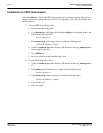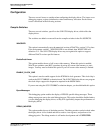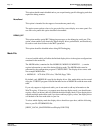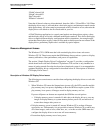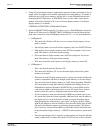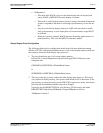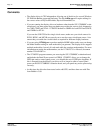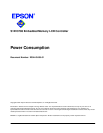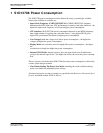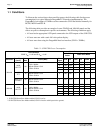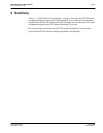
Page 12 Epson Research and Development
Vancouver Design Center
S1D13708 Windows® CE 3.x Display Drivers
X39A-E-006-01 Issue Date: 01/11/14
2. Using off-screen display memory significantly improves display performance. For ex-
ample, slider bars appear more smooth when using off-screen memory. To enable or
disable the use of off-screen memory, edit the file: x:\wince300\platform\cepc\driv-
ers\display\S1D13708\sources. In SOURCES, there is a line which, when uncom-
mented, will instruct Windows CE to use off-screen display memory (if sufficient
display memory is available):
CDEFINES=$(CDEFINES) -DEnablePreferVmem
3. In the file PROJECT.REG under CE 3.0, there is a key called PORepaint (search the
Windows CE directories for PROJECT.REG). PORepaint is relevant when the Sus-
pend state is entered or exited. PORepaint can be set to 0, 1, or 2 as described below:
a. PORepaint=0
• This mode tells Windows CE not to save or restore display memory on sus-
pend or resume.
• Since display data is not saved and not repainted, this is the FASTEST mode.
• Main display data in display memory must NOT be corrupted or lost on sus-
pend. The memory clock must remain running.
• Off-screen data in display memory must NOT be corrupted or lost on sus-
pend. The memory clock must remain running.
• This mode cannot be used if power to the display memory is turned off.
b. PORepaint=1
• This is the default mode for Windows CE.
• This mode tells Windows CE to save the main display data to the system
memory on suspend.
• This mode is used if display memory power is going to be turned off when the
system is suspended, and there is enough system memory to save the image.
• Any off-screen data in display memory is LOST when suspended. Therefore
off-screen memory usage must either be disabled in the display driver (i.e:
EnablePreferVmem not defined in SOURCES file), or new OEM-specific
code must be added to the display driver to save off-screen data to system
memory when the system is suspended, and restored when resumed.
• If off-screen data is used (provided that the OEM has provided code to save
off-screen data when the system suspends), additional code must be added to
the display driver’s surface allocation routine to prevent the display driver
from allocating the “main memory save region” in display memory. When
WinCE OS attempts to allocate a buffer to save the main display data, WinCE
OS marks the allocation request as preferring display memory. We believe
this is incorrect. Code must be added to prevent this specific allocation from
being allocated in display memory - it MUST be allocated from system mem-
ory.
• Since the main display data is copied to system memory on suspend, and then
simply copied back on resume, this mode is FAST, but not as fast as mode 0.



